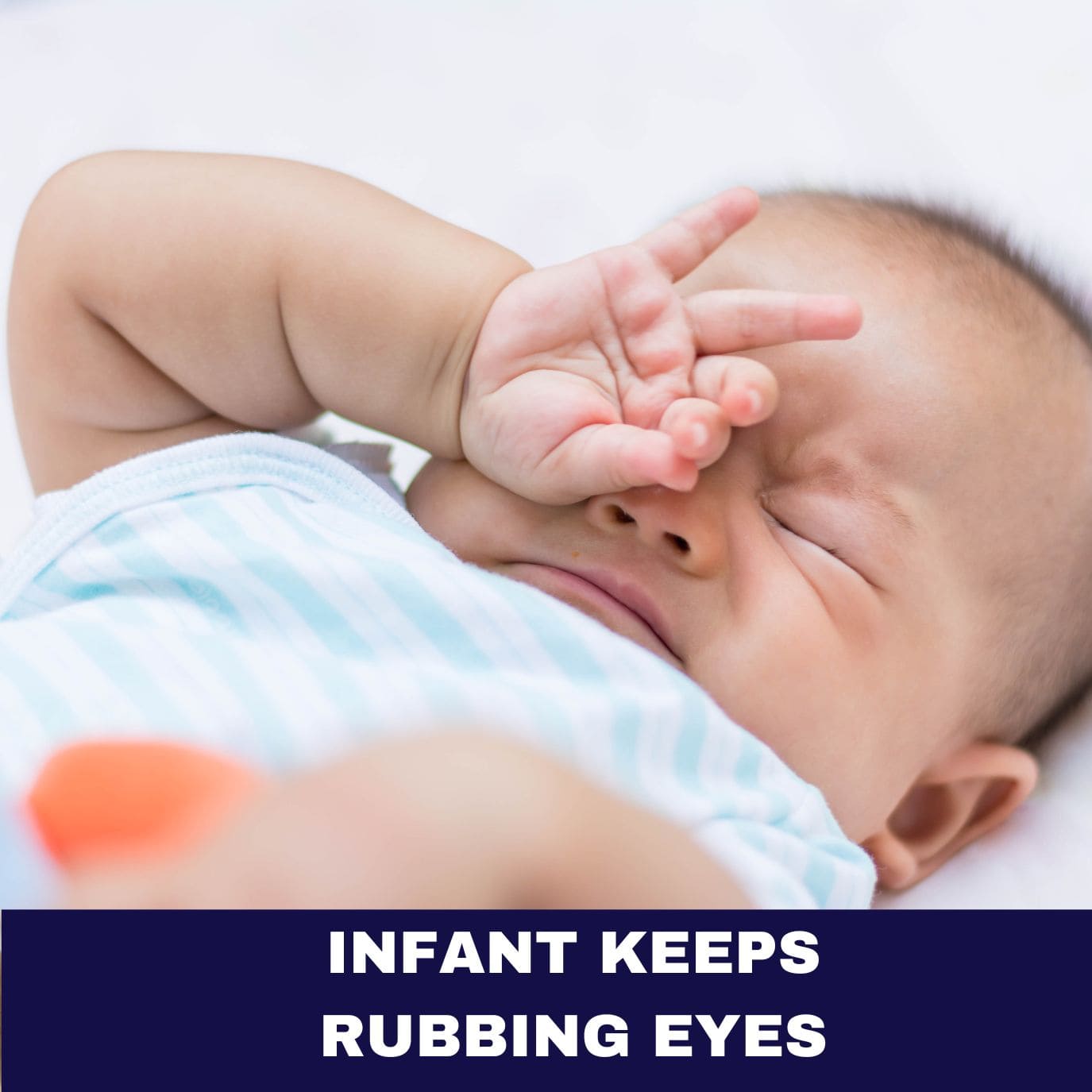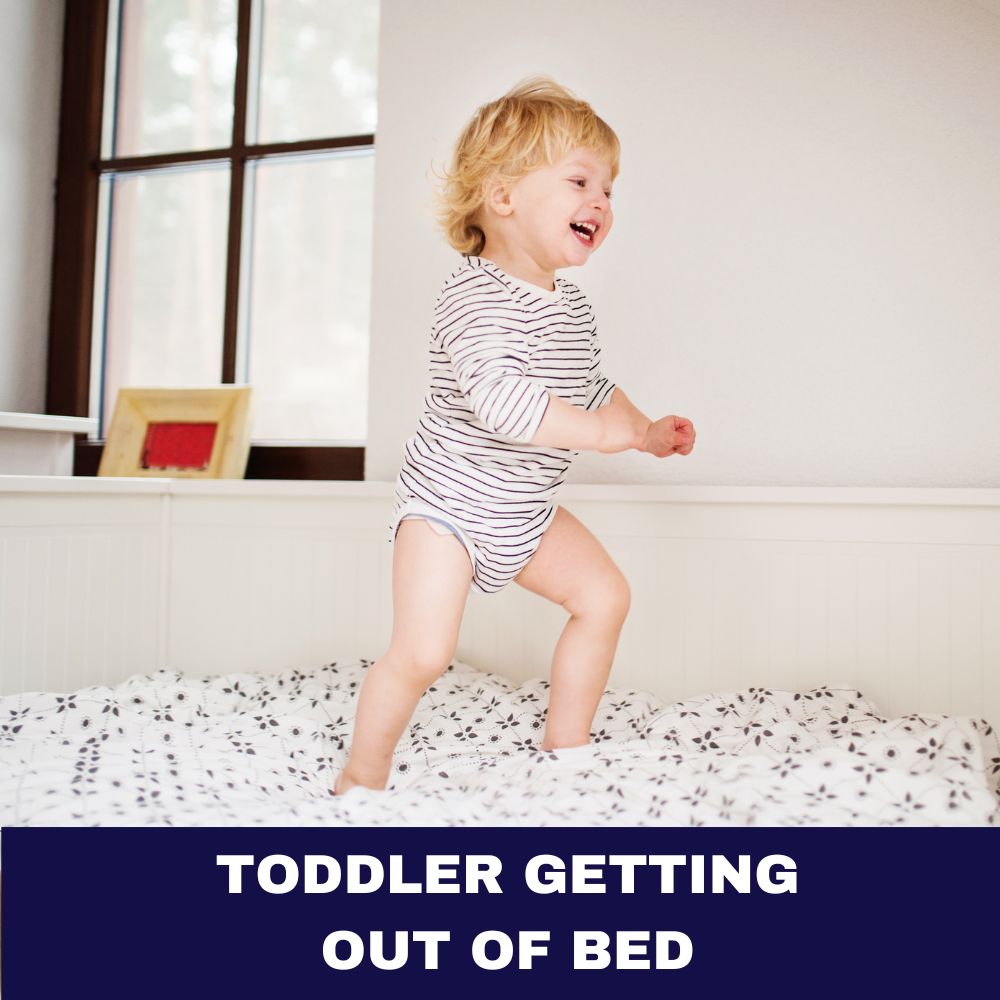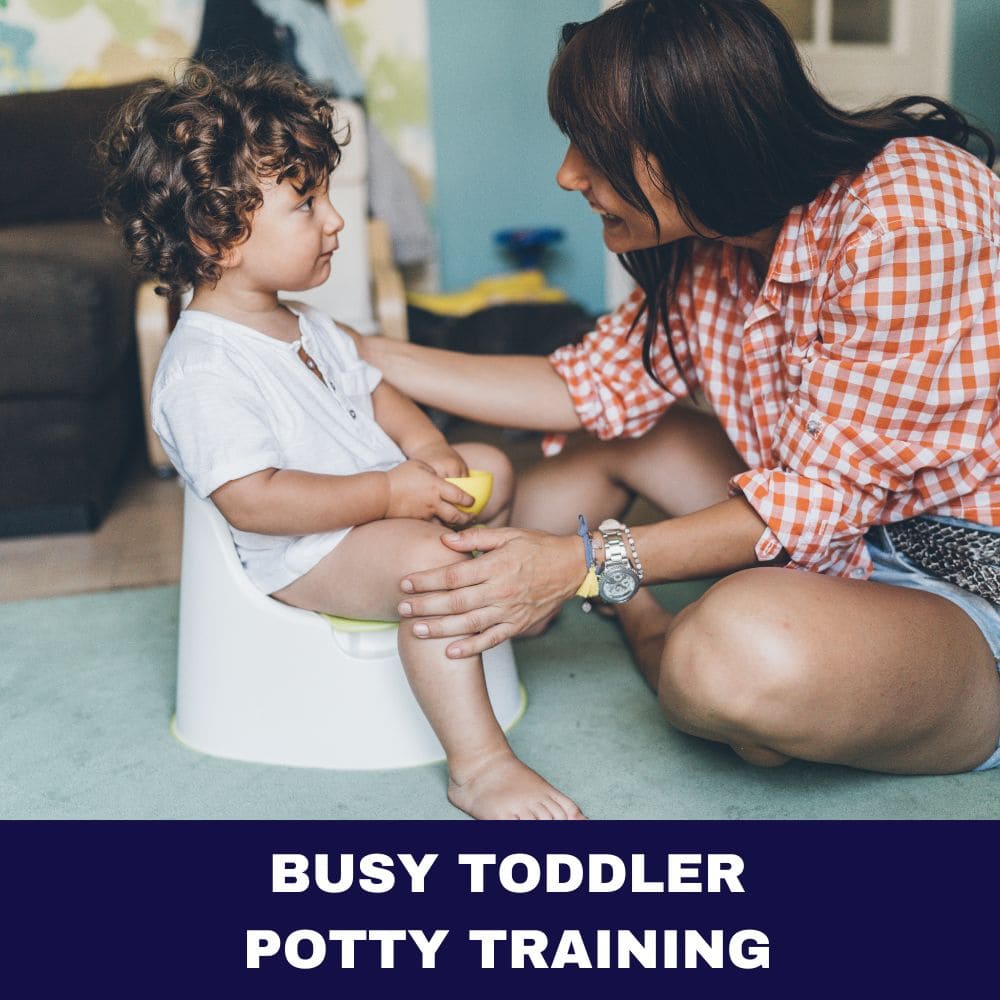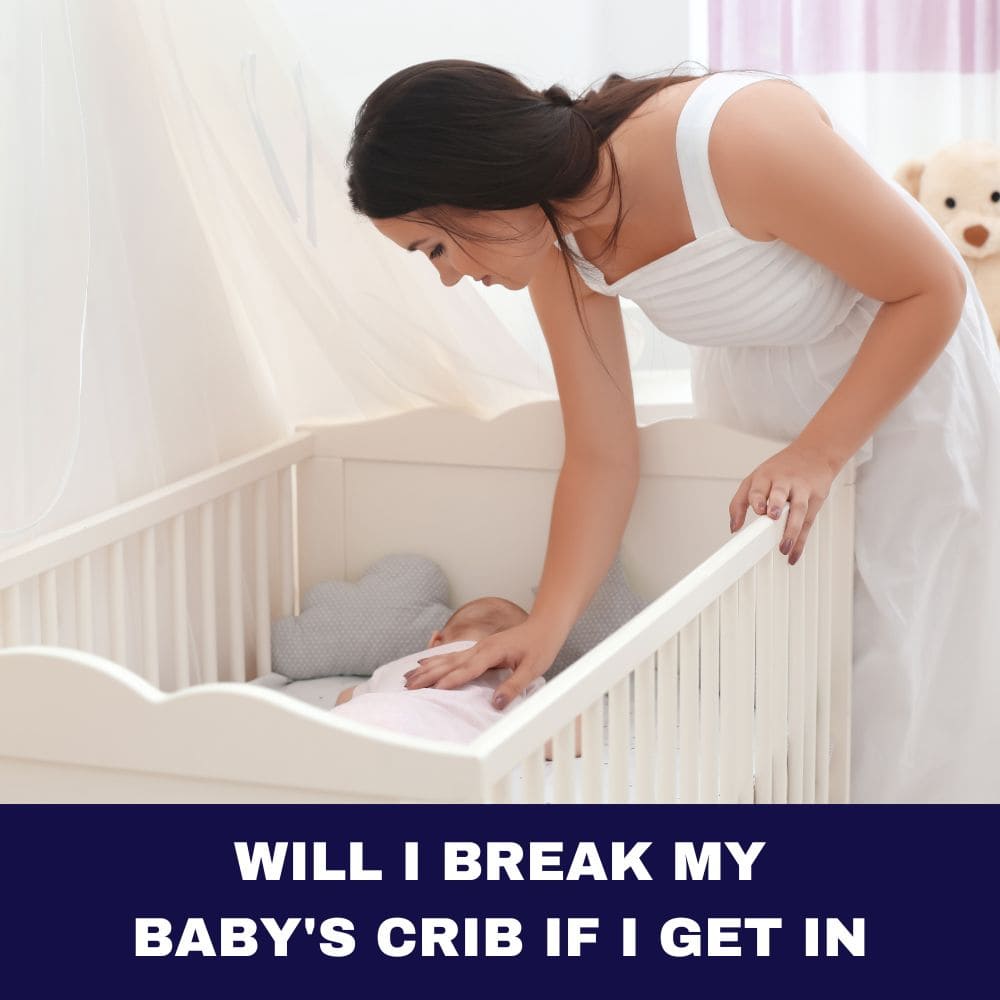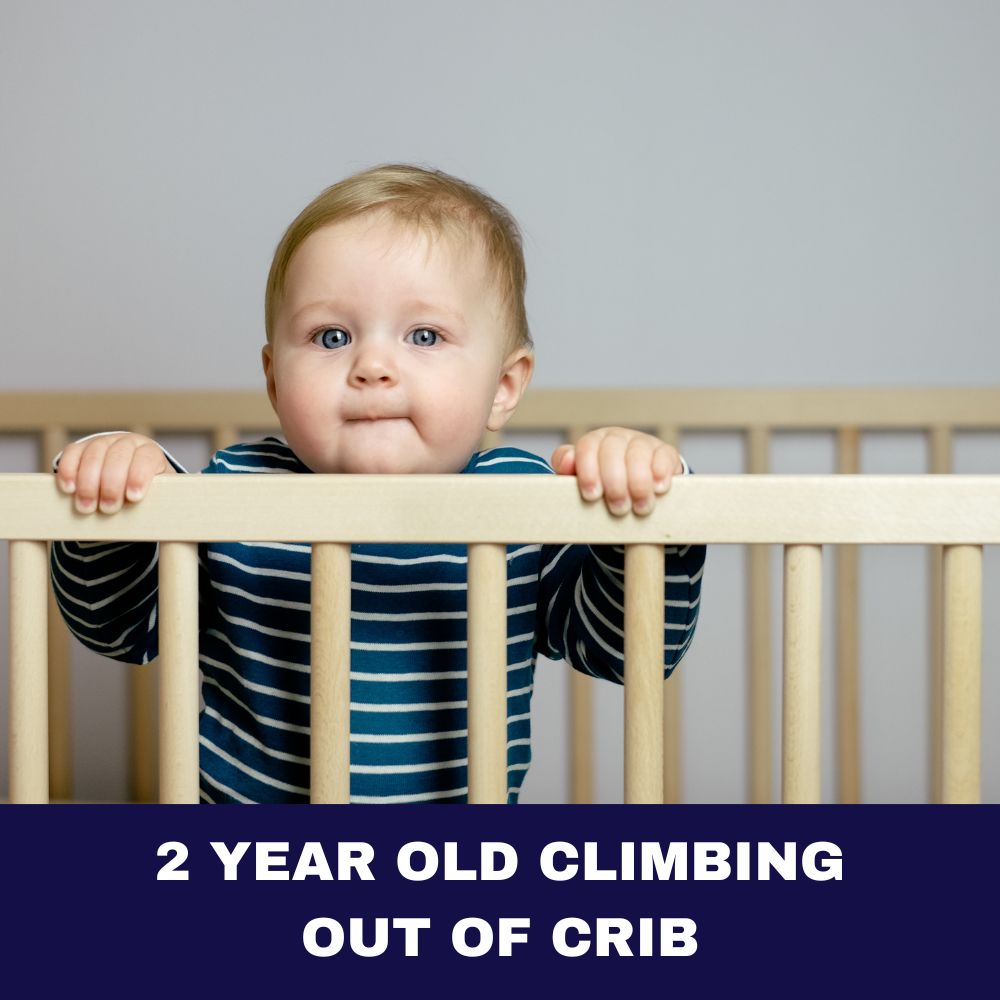It’s 2 AM, and you’re jolted awake by a tiny set of footsteps wandering into your bedroom. Your heart skips a beat as you realize your toddler has made yet another daring escape from their crib, crawling out with a mischievous grin. You’re not alone in this adventure – countless parents have found themselves in a similar predicament, wondering how their little one managed to pull off this feat of toddler crawling out of crib and what they can do to ensure everyone gets a good night’s sleep.
Toddlers are natural-born explorers, and the ability to climb out of their cribs is a milestone that often catches parents off guard. While it’s a sign of their growing independence and physical capabilities, it can also be a source of concern for their safety and your sanity when faced with a toddler crawling out of crib repeatedly. Fear not, fellow parents! We’ve got your back with seven ingenious hacks to keep your little escape artist safe and sound in their crib.
Understanding the Reasons Behind Toddler Crib Escapes
Before we dive into the solutions, let’s explore why toddlers are so determined to break free from their cribs. It’s not just a phase or a bid for attention – there are legitimate developmental factors at play.
- Curiosity and Exploration: Toddlers are hardwired to discover their surroundings. The crib, once a cozy haven, can become a confining space that sparks their curiosity and urges them to explore beyond its boundaries.
- Developing Independence: As toddlers grow, they assert their newfound independence and desire to make their own choices. Climbing out of the crib is one way they can exert control over their environment and demonstrate their physical abilities.
- Seeking Parental Interaction: Sometimes, toddlers simply want to be close to you. Their crib escape attempts may be a cry for attention or a way to seek out your company during the night.
- Transition to a Toddler Bed: In some cases, crib escapes can signal that your little one is ready to transition to a toddler bed, allowing them more freedom of movement and exploration.
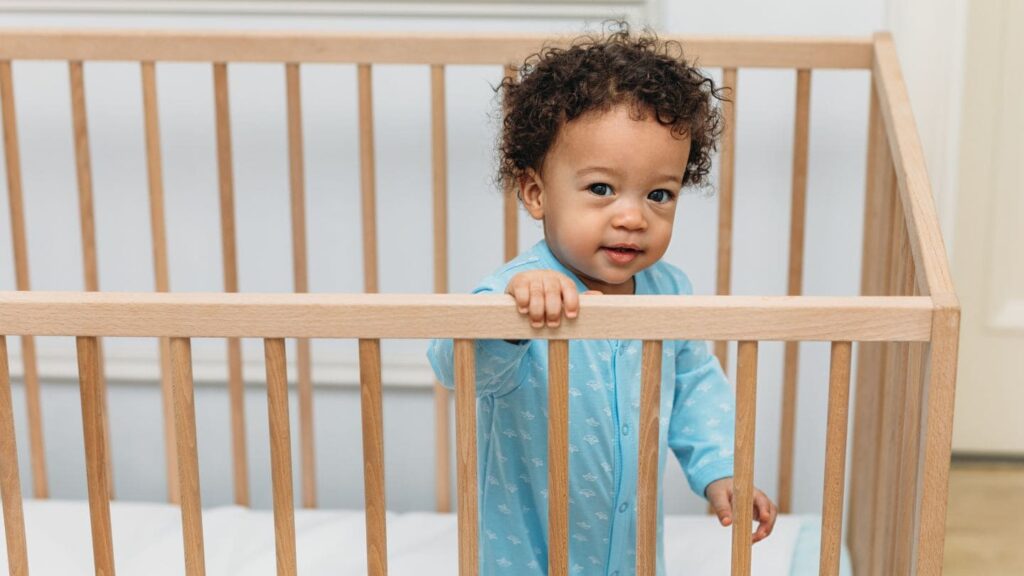
Why It’s Happening
While every child is unique, there are some common reasons why toddlers start climbing out of their cribs. Understanding these causes can help you address the issue more effectively.
- Increased Mobility: As toddlers develop better motor skills and coordination, they become more adept at pulling themselves up and over the crib rails. Their newfound physical abilities can be both exciting and concerning for parents.
- Desire for Independence: Toddlerhood is a time when children start asserting their autonomy. Climbing out of the crib can be a way for them to explore their environment and test their boundaries.
- Curiosity and Exploration: The world is a fascinating place for toddlers, and their inquisitive nature often leads them to seek new adventures. The crib may no longer seem like an exciting place, prompting them to find a way out and investigate their surroundings.
While these reasons are perfectly normal and expected, it’s crucial to address crib escapes promptly to ensure your toddler’s safety and your own peace of mind.
7 Ingenious Hacks to Keep Your Little Escape Artist Safe
Now that we’ve explored the “why” behind toddler crib escapes, let’s dive into some practical solutions to keep your little one safe and secure.
- Crib Tent or Mesh Tent
A crib tent or mesh tent is a simple yet effective way to create a physical barrier that prevents your toddler from climbing out while still allowing proper airflow. These tents can be easily installed on most standard cribs and provide a secure enclosure without feeling too confining.
Next Step: Research reputable brands and models that are designed with safety in mind. Look for breathable mesh materials and secure attachments to ensure your toddler’s comfort and prevent entanglement hazards.
- Crib Conversion
If your toddler’s crib has the capability to convert into a toddler bed, this could be a great solution. By removing one or more sides of the crib, you create a safe environment for your little one to move around freely while still maintaining a familiar sleeping space.
Next Step: Consult your crib’s manual or manufacturer for specific conversion instructions. Ensure that all necessary hardware and safety features are in place before making the transition.
- Doorway Baby Gate
A sturdy doorway baby gate can serve as a temporary solution to contain your toddler within their room until you can implement a more permanent solution. This approach allows them to move around freely within a safe and controlled space.
Next Step: Choose a gate that is tall enough to prevent climbing and install it securely in the doorway. Consider adding a fabric panel or mesh to prevent your toddler from attempting to squeeze through the bars.
- Crib Positioning
The strategic positioning of the crib can make a significant difference in discouraging climbing attempts. Place the crib away from furniture, walls, or other surfaces that could provide a foothold or leverage for your toddler to climb out.
Next Step: Rearrange the room layout, ensuring that the crib is in an open space without any nearby objects that could aid in climbing. You may also consider placing a soft mat or rug around the crib to cushion potential falls.
- Crib Clothing
Specialized crib clothing, such as sleep sacks or wearable blankets, can restrict your toddler’s movement and make it more difficult for them to climb out of the crib. These garments provide warmth and comfort while ensuring your little one’s safety.
Next Step: Research age-appropriate and safe sleep sack options. Look for designs that allow for easy diaper changes and consider sizing up to accommodate growth spurts.
- Distraction Techniques
Sometimes, the best solution is to keep your toddler engaged and distracted from the urge to climb out. Rotate toys or introduce new activities in the crib to capture their interest and encourage them to stay put.
Next Step: Create a rotation of safe, age-appropriate toys and books that can be swapped out regularly to maintain your toddler’s interest. Consider incorporating sensory toys or interactive books to stimulate their minds and keep them occupied.
- Positive Reinforcement
Positive reinforcement is a powerful tool in shaping behavior. Praise and reward your toddler when they remain in their crib, and avoid giving attention to crib escapes. This approach can encourage desired behavior and help your little one understand your expectations.
Next Step: Develop a consistent reward system that works for your family. This could involve stickers, special treats, or extra playtime. Be patient and consistent with your reinforcement, as it may take time for the desired behavior to become habitual.
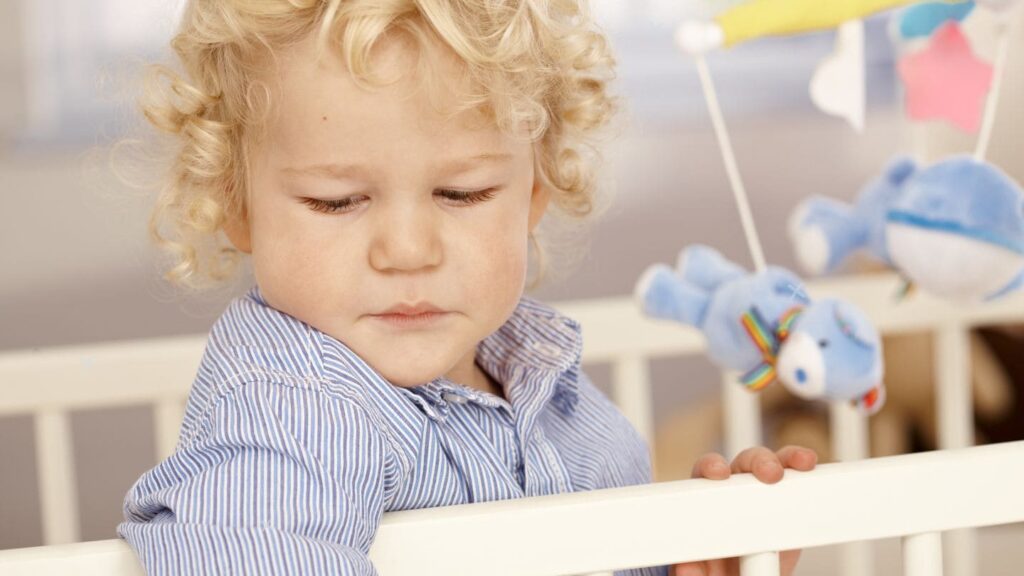
Prevention of Dangerous Outcomes
While implementing these hacks can help keep your toddler safe, prevention is always the best approach. Here are some essential precautions to take:
- Keep the crib clear of objects that could aid in climbing, such as stuffed animals or pillows.
- Regularly check for loose or broken crib parts that could create potential hazards.
- Never leave your toddler unattended in their crib for extended periods, and always supervise during nap and bedtimes.
- Ensure that the crib meets current safety standards and is properly assembled.
| Checklist Item | Description |
|---|---|
| Clear Crib Space | Keep the crib clear of objects that could aid in climbing, such as stuffed animals or pillows. |
| Crib Inspection | Regularly check for loose or broken crib parts that could create potential hazards. |
| Supervision | Never leave your toddler unattended in their crib for extended periods, and always supervise during nap and bedtimes. |
| Safety Standards | Ensure that the crib meets current safety standards and is properly assembled. |
Stuff We Cannot Do
While trying to find solutions, it’s important to avoid practices that could potentially harm your toddler or undermine their sense of security. Here are some things you should steer clear of:
- Physical punishment or harsh disciplinary methods. These can be traumatizing and ineffective in addressing the underlying reasons for your toddler’s behavior.
- Leaving your toddler unsupervised in an unsafe environment. Their safety should always be the top priority.
- Implementing unsafe or makeshift solutions that could pose a risk of injury or suffocation.
Stuff We Can Do
Instead, focus on positive and effective approaches that promote your toddler’s well-being and create a safe sleep environment:
- Remain calm and patient. Toddlers can sense your frustration, which may escalate the situation.
- Consistently reinforce desired behaviors through praise and rewards.
- Ensure your toddler’s room is child-proofed and free from potential hazards.
- Seek professional guidance from pediatricians or child development experts if needed.
Transitioning to a Toddler Bed
While the crib escapes can be frustrating, they may also signal that your little one is ready to make the transition to a toddler bed. This milestone can be both exciting and nerve-wracking, but with proper preparation and consistency, you can make it a smooth and successful process.
- Signs for Keeping the Crib vs. Transitioning to a Toddler Bed
Before you decide to transition, consider the following signs that may indicate your toddler is ready for a big kid bed:
- Frequent crib escapes, despite your efforts to keep them contained.Your toddler has reached a certain age (typically between 2-3 years old) or height (around 35 inches tall).They express a desire to sleep in a “big kid” bed like their older siblings or friends.
On the other hand, if your toddler seems content in their crib and is not exhibiting any signs of readiness, it may be best to keep them in the familiar environment a little longer.
- Strategies for a Smooth Transition
Making the switch to a toddler bed can be an exciting yet challenging process. Here are some strategies to ensure a smooth transition:
- Gradual Introduction: Start by letting your toddler explore the new bed during the day, read stories on it, or have playtime on it. This will help them become familiar and comfortable with the new sleeping arrangement.
- Consistent Routine: Maintain the same bedtime routine you had with the crib. This sense of familiarity can help your toddler feel secure and relaxed in their new sleeping environment.
- Positive Reinforcement: Praise and reward your toddler when they stay in their new bed throughout the night or during nap times. This positive reinforcement will encourage them to continue the desired behavior.
- Setting Boundaries: Establish clear rules and boundaries around the toddler bed, such as staying in their room or not getting out of bed until morning. Consistency is key when enforcing these guidelines.
- Safety Measures: Childproof the room, use bed rails or guard rails if necessary, and ensure there are no potential hazards or objects that could aid in climbing out.
| Strategy | Description |
|---|---|
| Gradual Introduction | Let your toddler explore the new bed during the day, read stories on it, or have playtime on it to become familiar with it. |
| Consistent Routine | Maintain the same bedtime routine you had with the crib to provide a sense of familiarity and security. |
| Positive Reinforcement | Praise and reward your toddler when they stay in their new bed throughout the night or during nap times. |
| Setting Boundaries | Establish clear rules and boundaries around the toddler bed, such as staying in their room or not getting out of bed until morning. |
| Safety Measures | Childproof the room, use bed rails or guard rails if necessary, and ensure there are no potential hazards or objects that could aid in climbing out. |
Remember, transitioning to a toddler bed is a process, and it may take some time and patience for your little one to adjust. Be prepared for occasional setbacks and remain consistent in your approach.
| Sign | Description |
|---|---|
| Frequent Crib Escapes | Your toddler is consistently climbing out of their crib, despite your efforts to keep them contained. |
| Age | Most experts recommend transitioning between the ages of 2-3 years old. |
| Height | If your toddler has reached a height of around 35 inches, they may be too big for the crib. |
| Desire for a “Big Kid” Bed | Your toddler expresses an interest in sleeping in a “big kid” bed like their older siblings or friends. |
Despite our best efforts, accidents can still happen. If your toddler hits their head while attempting to climb out of their crib, it’s crucial to take immediate action:
What to Do If a Toddler Hits Their Head During an Escape Attempt
- Remain calm and assess the situation. Check for any visible injuries or signs of distress.
- If your toddler appears disoriented, has a severe headache, or loses consciousness, seek medical attention immediately, as these could be signs of a concussion or more serious injury.
- For minor bumps or bruises, apply a cold compress to the affected area and monitor your toddler closely for any concerning symptoms.
- Consult your pediatrician or healthcare provider if you have any concerns or if the symptoms persist or worsen.
It’s always better to err on the side of caution when it comes to head injuries, as they can sometimes have delayed or subtle symptoms.

Conclusion:
Dealing with a toddler who has mastered the art of crib escapes can be a challenging and exhausting experience. However, by understanding the reasons behind their behavior and implementing the seven ingenious hacks outlined in this blog post, you can navigate this phase with confidence and ensure your little one’s safety.Embrace the journey, fellow parents! Toddlerhood is a rollercoaster ride filled with milestones, discoveries, and the occasional midnight adventure. By remaining patient, consistent, and proactive, you can not only survive but thrive during this exciting stage of your child’s development.Remember, you are not alone in this adventure. Seek support from fellow parents, share tips and strategies, and don’t be afraid to ask for help when needed. Together, we can conquer the challenges of toddler crib escapes and create a safe, nurturing environment for our little escape artists to grow and flourish.So, sleep tight, stay vigilant, and cherish these fleeting moments, for before you know it, your little Houdini will be off exploring new adventures and leaving the crib days behind.
FAQ – Toddler Crawling Out of Crib
Why do toddlers try to climb out of their cribs?
Toddlers attempt to climb out of their cribs for a variety of reasons. Firstly, it’s a natural part of their development as they gain new physical abilities and become more mobile. Their growing independence and curiosity drive them to explore beyond the confines of the crib. Additionally, some toddlers may seek more interaction with their parents or simply want to sleep in a “big kid” bed like older siblings. It’s a developmental milestone that signals their increasing autonomy and desire for freedom.
At what age should I transition my toddler to a bed?
There’s no definitive age for transitioning a toddler to a bed, as every child develops at their own pace. However, most experts recommend making the switch between the ages of 2 and 3 years old. Signs that your toddler may be ready include frequent crib escapes, reaching a height of around 35 inches, or expressing a desire for a “big kid” bed. It’s essential to watch for these cues and not rush the transition before your toddler is truly ready.
How can I encourage my toddler to stay in their crib?
There are several strategies you can employ to encourage your toddler to stay in their crib. Positive reinforcement, such as praising and rewarding them when they remain in their crib, can be highly effective. Additionally, providing engaging toys or activities in the crib can distract them from the urge to climb out. Maintaining a consistent bedtime routine and ensuring their room is childproofed can also help create a secure and inviting environment.
What safety precautions should I take to prevent crib escapes?
Ensuring your toddler’s safety is paramount when dealing with crib escapes. Keep the crib clear of objects that could aid in climbing, such as stuffed animals or pillows. Regularly check for loose or broken crib parts that could create potential hazards. Never leave your toddler unattended in their crib for extended periods, and always supervise during nap and bedtimes. Additionally, ensure that the crib meets current safety standards and is properly assembled.
What should I do if my toddler hits their head during a crib escape attempt?
If your toddler hits their head while attempting to climb out of their crib, it’s crucial to remain calm and assess the situation. For minor bumps or bruises, apply a cold compress and monitor your toddler closely for any concerning symptoms. However, if your toddler appears disoriented, has a severe headache, or loses consciousness, seek medical attention immediately, as these could be signs of a concussion or more serious injury. It’s always better to err on the side of caution when it comes to head injuries.





